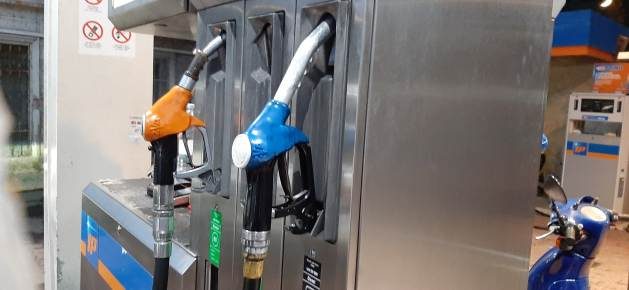When 95% of active managers can’t beat a broad market benchmark, claiming you can is rather pointless. Instead, it’s better to show investors how to fish. Investing is about doing enough due diligence to make a decision with conviction, but not so much that you approach analysis paralysis. Today, we’re going to start down the path of finding a suitable replacement for our “robotics” holding, Teradyne (TER). (To understand why we’re looking to exit Teradyne, see last week’s piece on Teradyne Stock: Where’s the Robotics Exposure?)
The Two Biggest Robotics ETFs
It’s coming up on five years since we wrote about Two ETFs for Artificial Intelligence and Robotics, both of which were less than impressive at the time. That opinion still holds true today. While both ETFs have over $1 billion in assets under management (AUM), both have seen AUM decline by more than a third over the past five years.

That decline could be the competition coming form ARK Invest, or it could be investors looking elsewhere for alpha. Performance has been subpar with ROBO and BOTZ returning +21% and -7% over the past five years respectively compared to a Nasdaq return of +75% over the same time frame. (That’s without considering the hefty expense ratios charged by both ETF providers.) The performance differences between these two ETFs can be attributed to the dramatically different weighting structures and constituents. But we’re not interested in either ETF, we’re here to find an interesting pure-play robotics stock we can swap out Teradyne with.
Both ETF providers have teams of analysts and research experts out there pounding the ground to find the leaders in robotics. Unfortunately, they can’t agree on much. Several years ago, we looked at three robotics ETFs and found just 18 names that all providers could agree upon.

It’s not so clear as to which stocks offer investors exposure to robotics, but if three providers can agree upon 18 names, that means something. Given the ROBT ETF has fallen out of favor with investors with its eclectic mix of 116 constituents, we decided to stick with common names found between ROBO and BOTZ of which there are 19. Let’s start by removing companies we’ve covered before:
- Cognex (like) – Leading machine vision provider with opaque financial reporting
- Intuitive Surgical (like) – Leader in surgical robots
- AutoStore (love) – Leader in warehouse robotics automation
- Omnicell (like) – Leader in pharmacy automation
- NVIDIA (love) – Holding as a play on the growth of AI and data center hardware
The first three names in the above list we shortlisted last summer as the best robotics stocks found to date. We didn’t like how opaque Cognex is when it comes to financial reporting, and we didn’t want to increase our exposure to healthcare and medical devices with a punt on Intuitive Surgical. So, we went long AutoStore, which leaves us with 14 companies that experts believe provide decent exposure to the growth of robotics. Half speak Japanese.
| Ticker | Market Cap (USD billions) | Country | |
| TECAN GROUP | TECN SW | 5.4 | Switzerland |
| RENISHAW PLC | RSW LN | 3.5 | United Kingdom |
| JOHN BEAN TECH | JBT | 3.5 | United States |
| FARO TECHNOLOGIES | FARO | 0.5 | United States |
| CARGOTEC | CGCBV FH | 3.28 | Finland |
| ATS | ATS CN | 3.7 | Canada |
| ABB | ABBN SW | 63 | Switzerland |
| FANUC | 6954 JP | 31 | Japan |
| KEYENCE | 6861 JP | 103 | Japan |
| OMRON | 6645 JP | 10 | Japan |
| YASKAWA ELECTRIC | 6506 JP | 9.5 | Japan |
| DAIFUKU | 6383 JP | 6.6 | Japan |
| SMC | 6273 JP | 32 | Japan |
| SHIBAURA MACHINE | 6104 JP | .46 | Japan |
Before we start digging into what these companies do, let’s revisit the original thesis that led us to hold Teradyne.
The Industrial Robot Thesis
“He who shall not be named” once said that Tesla’s biggest competitive advantage in the auto industry was their manufacturing capabilities. Perhaps it’s why their margins are so high relative to the competition. A report by McKinsey on industrial robotics highlighted the primary reason companies want to adopt robotics – to reduce costs – but the biggest barrier is the cost of robotic solutions. Robotics companies can reduce the cost of their robots through economies of scale, and by spending sufficient money on R&D so that they’re addressing the second customer pain point – a lack of homogeneous programming platforms/interfaces. By making robots less expensive and easier to use, adoption will only accelerate as the global manufacturing industry moves to “lights out factories.” Consequently, we want to invest in the largest producers of industrial robots. This should reduce risk and maximize rewards.
Industrial robots come in many shapes and sizes, and our investment in Teradyne limited our exposure to only collaborative robots (or cobots), albeit ones from Universal Robotics which commands a leading market share.

Attempting to estimate the size of the industrial robotics opportunity is challenging because you’ll get so many different estimates. What we do know is that global manufacturing across all industries is measured in trillions. Finding a leader in industrial robotics to replace our position in Teradyne will provide exposure to this thesis which arguably represents one of the biggest robotics opportunities out there.
14 Robotics Companies
Going back to our shortlist of 14 robotics companies, three stand out as leaders in industrial robotics. No matter what source you consult, lists of top industrial robot manufacturers always contain three names – Fanuc, ABB, and Yaskawa. Excluded from our list of industrial robotics leaders would be any large Japanese conglomerates like Mitsubishi which don’t offer pure play exposure, or Kuka which was acquired by Chinese household appliances maker Midea Group.
The reason we’re thinking of exiting Teradyne is because we’re not getting enough exposure to robotics. Sure, the stock has performed well over time, and there are other things to like about the company, but below you can see the extent to which we’re getting robotics exposure (based on company robotics revenue growth forecasts out to 2026).

Investing in a leading industrial robotics firm would be a suitable way to replace our Teradyne position, provided we get more industrial robotics exposure than just 20% of total revenues. This is where our research splits into two different tasks.
- Vet the three leading industrial robotics providers with a focus on identifying the one which offers the most pure-play exposure to robotics
- Sift through the other 11 shortlisted companies to see what compelling names might exist, again with a focus on pure-play exposure
Experts agree these 14 firms provide sufficient exposure to the growth of robotics, we just need to decide which one best complements our current tech stock portfolio. We’ll do so slowly and methodically because that’s how we prefer to make investment decisions when able.
Conclusion
Researching viable investment options for any given theme is straightforward, but it takes time and effort to evaluate the viability of each option. Screening for size, then meaningful revenues, then the existence of a gross margin that shows they have a business are just the first steps. The more difficult part is digging into the financials to figure out where exactly the revenues come from. That’s the next step for this list of 14 leading robotics companies.
Tech investing is extremely risky. Minimize your risk with our stock research, investment tools, and portfolios, and find out which tech stocks you should avoid. Become a Nanalyze Premium member and find out today!
















